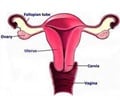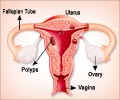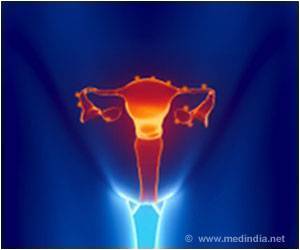Experts at UT Southwestern Medical Center say that diseases in the lining of the uterus can be easily visualized and diagnosed with the aid of a procedure, when used in conjunction
The visualization and diagnosis of diseases of the endometrium (the lining of the uterus) can be made easier by using a certain novel procedure in conjunction with vaginal ultrasounds; say experts at UT Southwestern Medical Center.
The doctors involved in their study women who were in the midst of or had gone through menopause and who complained of abnormal bleeding.Abnormal bleeding can indicate certain diseases of the endometrium, a cavity that lines the inside of the uterus, which may or may not be malignant.
The current standard of care is to blindly biopsy the endometrium, but the biopsy may not always sample the part of the cavity that is diseased.
The researchers have found that using saline-infusion sonography (SIS), or ultrasound, allows doctors to actually see where in the endometrium a polyp or growth exists and to biopsy it accordingly.
"Saline infusion sonography augments the usual transvaginal sonogram and lets us see what is inside the endometrium. Normally, the endometrial cavity is collapsed, but when we infuse it with saline, we can visualize inside the cavity and see if it contains any abnormalities," said Dr. Elysia Moschos, associate professor of obstetrics and gynecology at UT Southwestern and the lead author of the study.
The researchers point out that water appears dark and tissue light on a sonogram, and thus polyps or tumours look bright in comparison with the surrounding saline solution.
Advertisement
For their study, the researchers obtained a total of 88 saline-infusion sonography endometrial samples.
Advertisement
Dr. Moschos said that there were no women for whom blind biopsy of the endometrium would still be an appropriate first step. The blind biopsies missed 15 of 16 benign polyps and one-third of cancers.
By comparison, two-thirds of benign polyps were correctly diagnosed by saline-infusion sonography endometrial sampling and no premalignant or malignant growths were missed.
Dr. Moschos underscored the fact that abnormal bleeding is a common complaint among patients, particularly during and after menopause.
The researcher said that women experiencing such symptom need to be evaluated for any kind of gynecologic cancers, and that the first step should be imaging of the endometrium by ultrasound.
According to the American College of Obstetrics and Gynecology, postmenopausal women who have an endometrial lining thicker than 4 millimetres need further follow-up.
"In women with abnormal endometrial appearances, SIS should then be performed. If the endometrium is uniformly thickened on the SIS exam, only then is a blind biopsy appropriate. However, most endometrial pathology is focal, and therefore directed sampling, such as with saline infusion sonography guidance, is necessary," Dr. Moschos said.
The study has been published online in the journal Obstetrics and Gynecology.
Source-ANI
TAN















